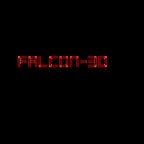Introduction
Recently, there’s been a buzz in the construction and building surveys worlds. This buzz isn’t from the sound of heavy machinery, but from the quiet whirring of drones taking to the skies. Yes, those small, remote-controlled planes called drones have changed a lot about how we scan and check out buildings.
Building surveying is changing a lot because of drone technology. This blog will talk about what that means for the business.
The Rise of Drones in Building Surveying
Drones, which are also called Unmanned Aerial Vehicles (UAVs), are becoming more and more famous in many areas, such as building surveying and construction. These flying machines are equipped with cameras and sensors that let them take high-resolution pictures and data from places and angles that were hard to reach or not possible at all before.
The Benefits of Drones in Building Surveying
- Cost-Effective: Drone building surveys are more cost-effective than traditional surveying methods. They eliminate the need for expensive equipment and labor-intensive processes, reducing surveying costs significantly.
- Safety: Sending a drone to inspect a building or construction site is safer than putting workers at risk. Drones can access hard-to-reach areas without endangering human lives.
- Efficiency: Drones can cover large areas quickly, reducing the time needed for surveys. This increased efficiency means faster project timelines and reduced disruptions to ongoing construction work.
- Precision: The data collected by drones is highly accurate, which is crucial in building surveying. It enables professionals to make informed decisions based on precise measurements and images.
Applications of Drone Technology in Building Surveying
- Site Inspections: Drones can provide a bird’s-eye view of construction sites, allowing surveyors to monitor progress, identify potential issues, and ensure adherence to design plans.
- Thermal Imaging: Thermal cameras on drones can identify heat leaks, water damage, or insulation problems within a building. This is invaluable for energy efficiency and maintenance purposes.
- Roof Inspections: Drones can inspect roofs for damage or wear and tear without the need for manual inspections that can be risky and time-consuming.
- 3D Mapping: Drones can create detailed 3D models of buildings, aiding architects, engineers, and surveyors in their planning and design work.
Regulatory Guidelines and Challenges
Drones in building surveying, like any other technology, are subject to legislation and guidelines. These standards are in place to guarantee that UAVs are operated safely and responsibly. To avoid legal difficulties, surveyors and operators must be aware of these regulations.
Challenges such as weather conditions, limited battery life, and data security also need to be addressed in the adoption of drone technology for building surveys.
The Future of Building Surveying with Drones
Drone technology is continually advancing, and its application in construction surveys is expected to grow. Drones will become much more capable of acquiring and analyzing data as AI, machine learning, and more advanced sensors evolve.
Conclusion
In conclusion, drones are changing the game in building surveying. They are low-cost, safe, efficient, and extremely precise tools with various advantages. Drones’ impact on the construction and surveying industries will only grow as regulations and technology progress, making our structures safer, more efficient, and more sustainable.
